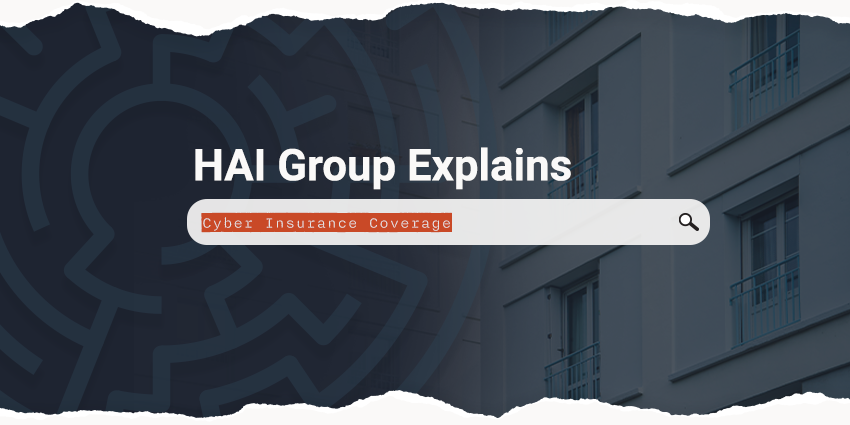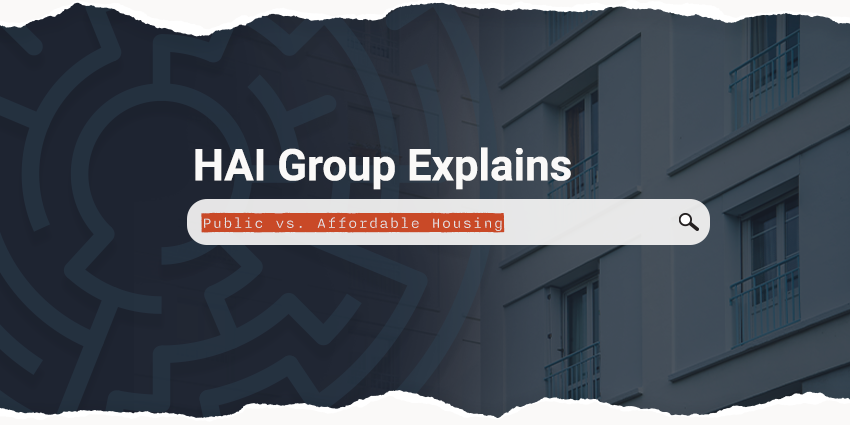Protecting Public Trust: Why Public Housing Agencies Need Cyber Insurance Coverage

In an increasingly digitized world, where data breaches and cyber threats have become pervasive, the need for robust cybersecurity measures extends to all sectors. Public housing agencies (PHAs), entrusted with sensitive information and critical operations, are no exception. Yet, despite the growing threat landscape, many PHAs may overlook the importance of cybersecurity coverage.
Unlike traditional property and general liability insurance policies, which lack the specificity to address cyber risks and often explicitly exclude coverage for such incidents, cybersecurity coverage offers tailored protection against the evolving threats public housing agencies face. This article explores the imperative for public housing agencies to prioritize cybersecurity coverage as a fundamental component of their risk management strategy, safeguarding their operations and residents and their hard-earned reputation in the community.
This article delves into why cybersecurity coverage is essential for public housing agencies to safeguard their operations, residents, and reputation.
Protection of sensitive data
Public housing agencies collect and store vast amounts of sensitive data, including personally identifiable information (PII) of residents, financial records, and operational data. This treasure trove of information is highly attractive to cybercriminals seeking to exploit vulnerabilities for financial gain or malicious intent. Cybersecurity coverage provides a safety net, helping agencies mitigate the financial and reputational damage resulting from data breaches or unauthorized access to confidential information.
Legal and regulatory compliance
Like most public and private companies nationwide, public housing agencies are subject to stringent data breach notification requirements to notify individuals of security breaches of information involving PII. Non-compliance with these regulations can result in hefty fines and legal repercussions. Cybersecurity coverage not only helps agencies cover the costs associated with regulatory fines but also assists in meeting compliance requirements through proactive risk management and incident response measures.
Mitigation of operational disruptions
Cyberattacks can disrupt essential services and operations, jeopardizing the well-being of residents and the efficiency of agency functions. From ransomware attacks to distributed denial-of-service (DDoS) attacks, the impact of such incidents can be far-reaching and long-lasting. Cybersecurity coverage includes provisions for business interruption, enabling agencies to mitigate financial losses and restore operations swiftly during a cyber incident.
Preservation of public trust
Public trust is paramount for housing agencies tasked with providing safe and secure housing solutions to vulnerable populations. A single cyber breach resulting in the exposure of sensitive resident information can erode trust and tarnish the agency's reputation irreparably. Cybersecurity coverage not only helps agencies recover from such incidents but also demonstrates a commitment to safeguarding resident privacy and security, reinforcing trust within the community.
Prevention of financial loss
The financial implications of a cyber incident extend beyond regulatory fines and legal fees. Cyberattacks often entail significant costs associated with data recovery, forensic investigations, and reputational damage control. Without adequate cybersecurity coverage, public housing agencies may find themselves bearing the full brunt of these expenses, potentially leading to budgetary constraints and service limitations.
Identifying risks: a crucial first step
Before securing cyber coverage, organizations must undertake the crucial step of identifying potential risk factors, said Scott Stevens, chief information security officer of cybersecurity firm Integrity Technology Solutions.
"These do not have to be drawn-out projects," Stevens said regarding risk assessments. "This is something that you can legitimately do in a couple of days if you focus on what technology risks are out there."
Stevens stressed the importance of annual assessments for housing organizations, advocating for the utilization of in-house expertise or third-party services to examine operational, privacy, and security risks. This assessment process involves determining the nature of sensitive data stored by the organization, evaluating employee access levels to such data, and scrutinizing the efficacy of existing data protection measures in mitigating risk.
Once risks are identified, organizations should take proactive measures to mitigate them and ensure comprehensive coverage under a cyber insurance policy. This proactive approach not only enhances the organization's resilience against cyber threats but also ensures alignment with regulatory requirements and industry best practices.
Key components of cyber insurance coverage
The specifics of cyber insurance coverage may vary among insurance carriers, but certain critical components remain consistent:
1. Privacy and network security liability: This coverage element addresses claims arising from the unauthorized disclosure of sensitive data resulting from a cyber breach.
2. Regulatory proceeding: In the event of a data breach leading to violations of privacy laws, this coverage element assists in covering costs associated with investigations and regulatory proceedings.
3. Breach event costs: Encompassing expenses related to initial breach consultations, call center services, credit monitoring, and identity theft assistance, this coverage element is crucial for managing breach aftermath effectively.
4. Business interruption: Protecting against income loss and expenses incurred due to network interruptions, this coverage element ensures continuity of operations during cyber crises.
5. Cyber extortion/ransomware: With ransomware attacks becoming increasingly prevalent, this coverage element provides resources to respond to incidents where data is held hostage, and cybercriminals demand ransom payments.
6. Cyber crime enhancements: These often optional enhancements offer nuanced coverage for specific incidents like social engineering, phishing, invoice manipulation, and crypto-jacking. However, it's important to note that such enhancements may be subject to sublimits, capping the maximum payout for certain types of losses.
Bottom line: prioritizing cybersecurity resilience
In an era where cyber threats loom large, public housing agencies must prioritize cybersecurity as an integral component of their risk management strategy. Investing in cybersecurity coverage is not merely a matter of compliance or financial prudence; it is a commitment to safeguarding the integrity of operations, protecting the privacy of residents, and upholding public trust. By proactively addressing cybersecurity risks and embracing comprehensive coverage solutions, public housing agencies can fortify their resilience against evolving threats and ensure the continued delivery of vital services to their communities.
Reach out to your HAI Group Account Services representative today for expert guidance and assistance with questions regarding cyber insurance coverage. Don't wait until it's too late—take proactive steps to protect your agency and the communities you serve.
This article is for general information only. HAI Group makes no representation or warranty about the accuracy or applicability of this information for any particular use or circumstance. Your use of this information is at your own discretion and risk. HAI Group and any author or contributor identified herein assume no responsibility for your use of this information. You should consult with your attorney or subject matter advisor before adopting any risk management strategy or policy.



